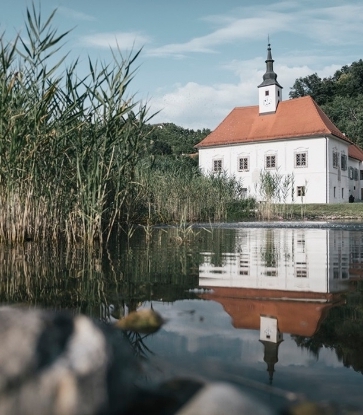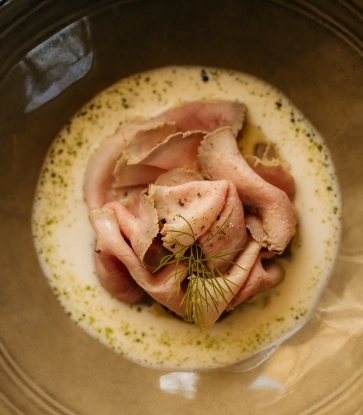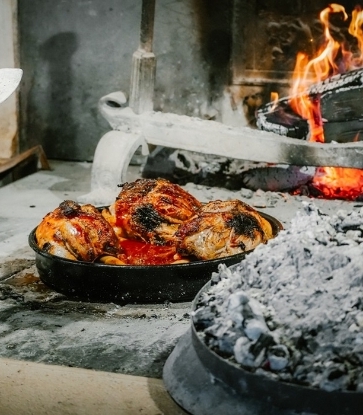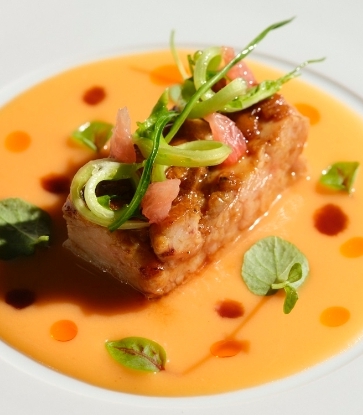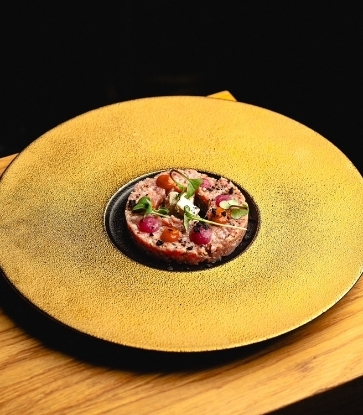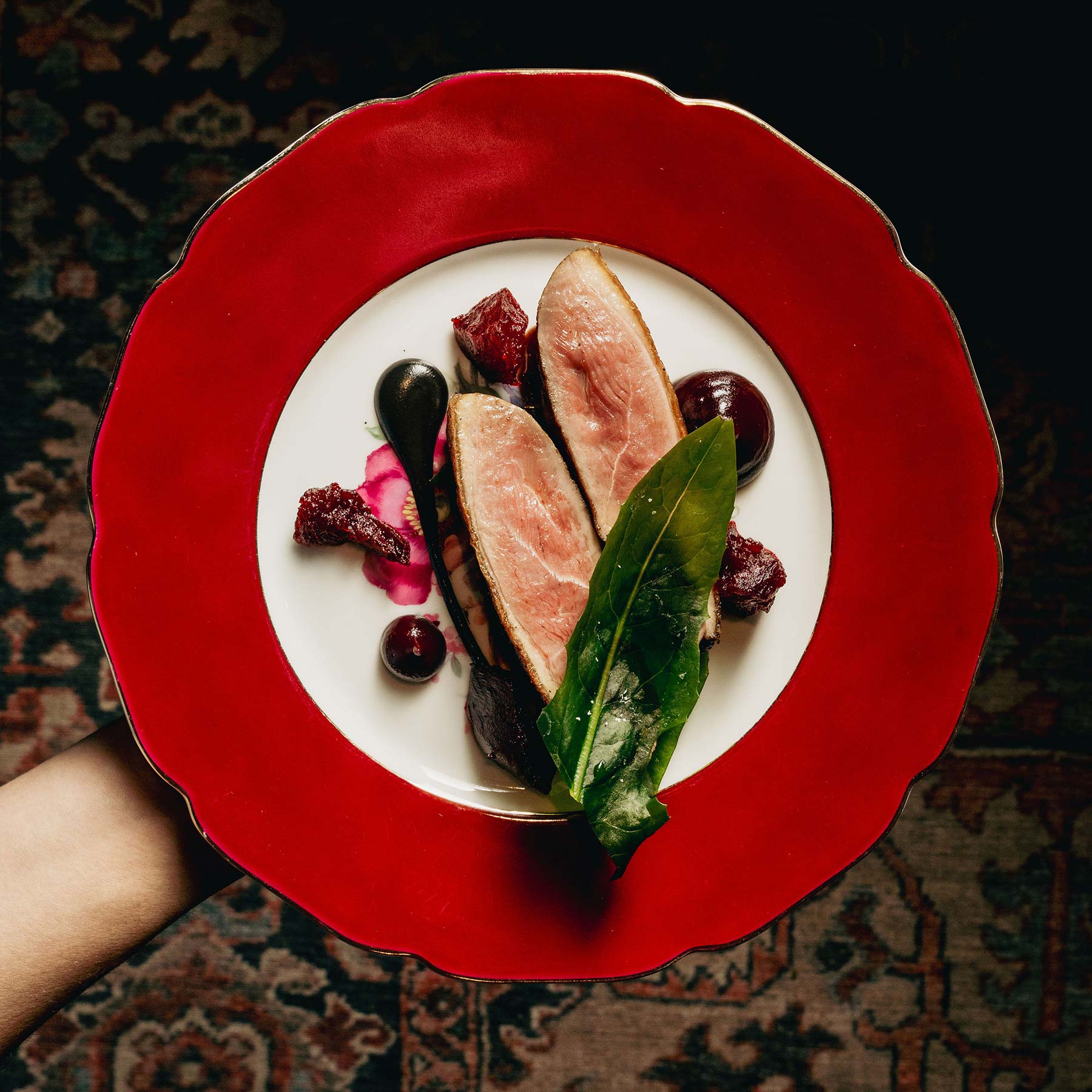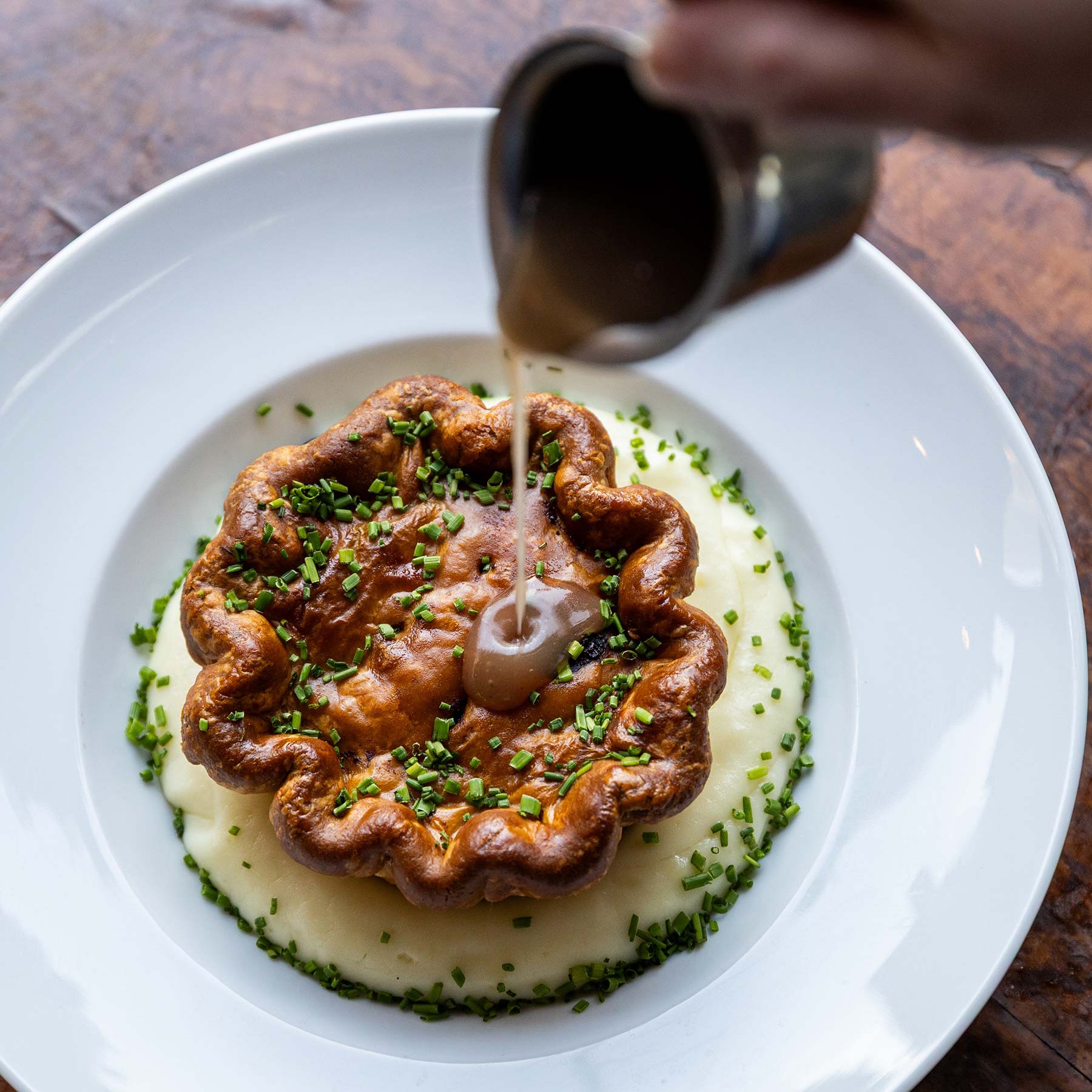Costes Downtown at Prestige Hotel : Breakfast of Champions
Costes Downtown is a spin off of the famous Costes, which earned a Michelin star as early as 2010 under international chef star Miguel Rocha Vieira’s direction, only two years after the restaurant’s opening. Located on the ground floor of the Prestige, a luxurious four-stars hotel near St. Stephen’s Basilica, the restaurant has a fabulous breakfast offer for its hotel guests, but everyone is welcome to drop by and try this elegant morning fare prepared by Márk Molnár, Costes Group Executive Chef.Upon entry, these early guests will immediately note the open kitchen and the chef’s table, sprinkled with the traditional breakfast items - granola, fruit, juice, bread - some of them being truly Hungarian, like paprika salami or the exquisite körözött (paprika cottage cheese spread) and others were inspired by Miguel Rocha Vieira’s Portuguese origins, like the eggplant caviar. The mix of Hungarian and Mediterranean ingredients is surprisingly tasty. Both cuisines are rich in spices. The directions are different, but the use of intense flavors is similar.

The egg-based dishes (omelette, Benedict, fried, poached, scrambled) are the only orders executed on the spot. A starred kitchen is used to a fine dining environment, with dishes with precise timing and preparatory technologies, but breakfast is a completely different topic. Here, guests do not arrive by reservation, but can pop in at any time. The items are much simpler and do not require long preparation process. And while a Michelin star quality is also expected here because of the restaurant’s reputation, there’s not as much room for creativity as there is for dinner, and the selection of potential ingredients is also much tighter.
While it’s « only » breakfast, Chef Márk’s morning menu is definitely impeccable, based on local ingredients to reduce the distribution chain. This way, Costes Downtown can provide maximum freshness to their guests, especially so in terms of fruit and vegetables. Far from the usual waterdowned coffee or bagged and crushed tea leaves usually served at hotel breakfast, the hot drinks are equally elegant and are a great way to start your gourmet day in Budapest.
Market hall, or ruin bar for a morning snack?
Budapest has many gorgeous market halls, but the most famous is certainly the Central Market Hall (Vámház boulevard 1-3.). Erected in 1896-97, the vast building features many stands and upper galleries displaying an abundance of fresh fruit and vegetables and traditional Hungarian such as duck liver, paprika (whole chilis and powders), huge jars of pickles…Open everyday but Sunday from 6 am, it’s the perfect place to sample some local specialties. And if it’s Sunday, panic not: Szimpla Kert (in the Jewish quarter, Kazinczy st. 14) - yes, the famous ruin bar* where young foreigners like to drink too much - has one of the best Sunday morning farmer’s markets in town. Organic vegetables, homemade plum and cherry jams, cured sausages, artisanal cheeses can be found on the small stands. One can even have an improvised snack at one of the tables in the courtyard, under the disco balls.
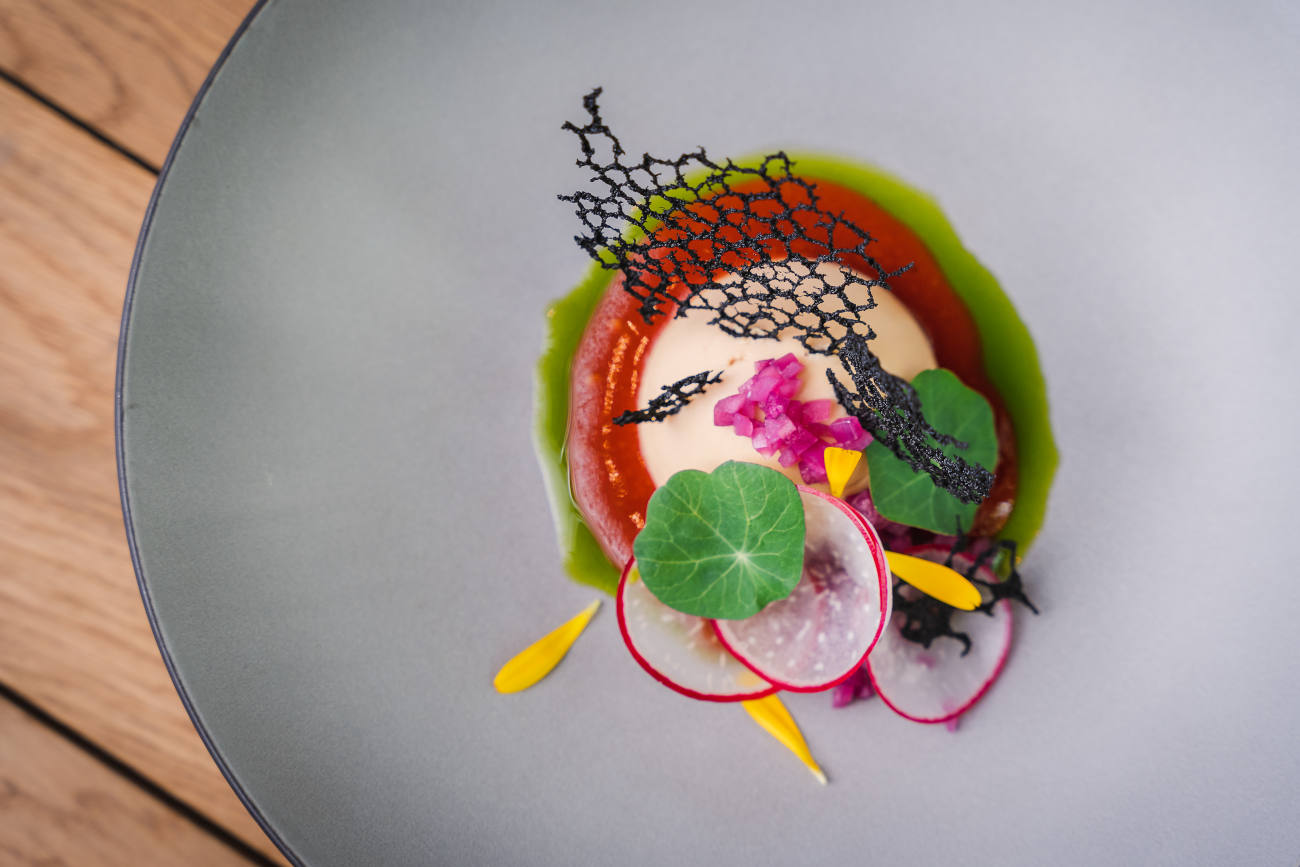
Hoppá! : Bistronomy lunch on a historical avenue
Located on the historical Andrássy Út, a vast avenue lined with magnificent buildings from the early 20th century, Hoppá brings a welcome change from the low-quality, touristic food joints that are usually found in this busy district. Occupying a position that was left open by the restaurant scene in Budapest, exactly between the popular bistro and the fine-dining venue, Hoppá serves excellent traditional Hungarian cuisine with a modern twist.The place is bright and airy, punctuated with sober wooden tables and chairs, with a mezzanine to accommodate small groups of friends or families. It’s an amazing spot to discover the staples of Hungarian cuisine as seen by a chef from the young generation. Here, you will find a perfect and modernized plate of chicken paprikash, the extremely popular chicken stew, a dome of foie gras mousse, or the ubiquitous túrógombóc, a dessert of cottage cheese dumplings. The portions are generous, following the Hungarian custom, but the preparation is refined and the ingredients’ quality is definitely superior.
Chef Márton Irtó is only 28 years old and has already been cooking for fourteen years. To him, Hungarian traditions must be preserved and enhanced by modern cooking techniques. He likes to start working with a traditional recipe, adding his own touch as he goes, especially in the dish’s plating. « When I was a child, my friend’s family had a Chinese restaurant », he recalls, « It inspired me to cook a traditional dish of goose liver with a sour plum sauce and millet, shaped as a Chinese roll ». Obsessed with the healthy idea of improving his skills, he’s always trying to surpass himself. « When I first started making túrógombóc (cottage cheese dumplings), I was following my grandmother’s recipe. After cooking in several restaurants, I began trying different versions. I’ve baked more than 1000 versions of túrógombóc and I’m still working on it », Chef Márton says.
Relaxed and unfussy, Hoppá, is the perfect link between generations, from the grandparents to the grandkids, including groups of friends who love to get a generously portioned dish, local wine from small wineries, and craft beer. It is reasonably priced and features only the best ingredients, like the Hortobágy beef raised in a small farm close to Budapest exclusively for the restaurant. And by the way, « Hoppá » means « oops » or « wow »: A typically Hungarian exclamation after a great meal. Rightly so.

From Gerbeaud to Ruszwurm : Welcome to cake paradise
You might feel a little full from your lavish lunch, but every real gourmet day in Budapest mustinclude a visit to one of the traditional cafés. Reminiscent of the Golden Era of the AustrianHungarian Empire, at the end of the 19th century/beginning of the 20th century, they are the right place to try a piece of divine Hungarian pastry, whether it’s the Dobos torte (sponge cake layered with chocolate butter cream and topped with caramel), the Strudel (rétes in Hungarian) with sweet or savory filling, the Krémes (vanilla custard pastry) or the delicious Gerbeaud slice (layers of sweet dough alternating with a filling of ground walnuts and apricot jam, toped with a glaze of chocolate). The latter is a creation of the café of the same name, Café Gerbeaud, a historic, elegant and cozy place in the city center.
You could also try a pastry at the impressive New York Café with its high rococo ceilings and its riot of colorful stucco decorations. If you prefer intimate settings, the Biedermeier-style Ruszwurm is the appropriate place for you, a tiny tearoom offering fabulous cakes displayed on an ancient cherrywood counter, in the historic castle district.
Pasztell : Hungarian fine dining at its very best
We’re back in St. Stephen’s basilica’s area. A few steps away from the famous monument, you will find restaurant Pasztell hiding behind a discreet building door on a wide avenue. Inside, the setting is intimate, with just a few tables and a kitchen visible behind a large glass panel, dimmed lights and a tasteful decoration. Upstairs, a second floor offers even more privacy, and the walls are used to exhibit works of young contemporary artists. « We’re trying to match dishes with works of art », explains Attila Hegyi.Before this gastro-entrepreneur bought the place in 2017, it was already a restaurant where János Erdei, Pasztell’s current chef, was working as a sous chef. Attila Hegyi, the owner of a catering company, wanted to create a fine-dining place in the heart of the city, while, according to him, « stepping out of the Hungarian reality ». He engaged in a collaboration with Nicola Portinari, the double starred chef at restaurant La Peca, in Italy. Pasztell is a very serious, ambitious gastronomic operation - if a young one. It is all the more astonishing that Hegyi and Portinari decided to place their trust in János Erdei before opening the restaurant in 2018.
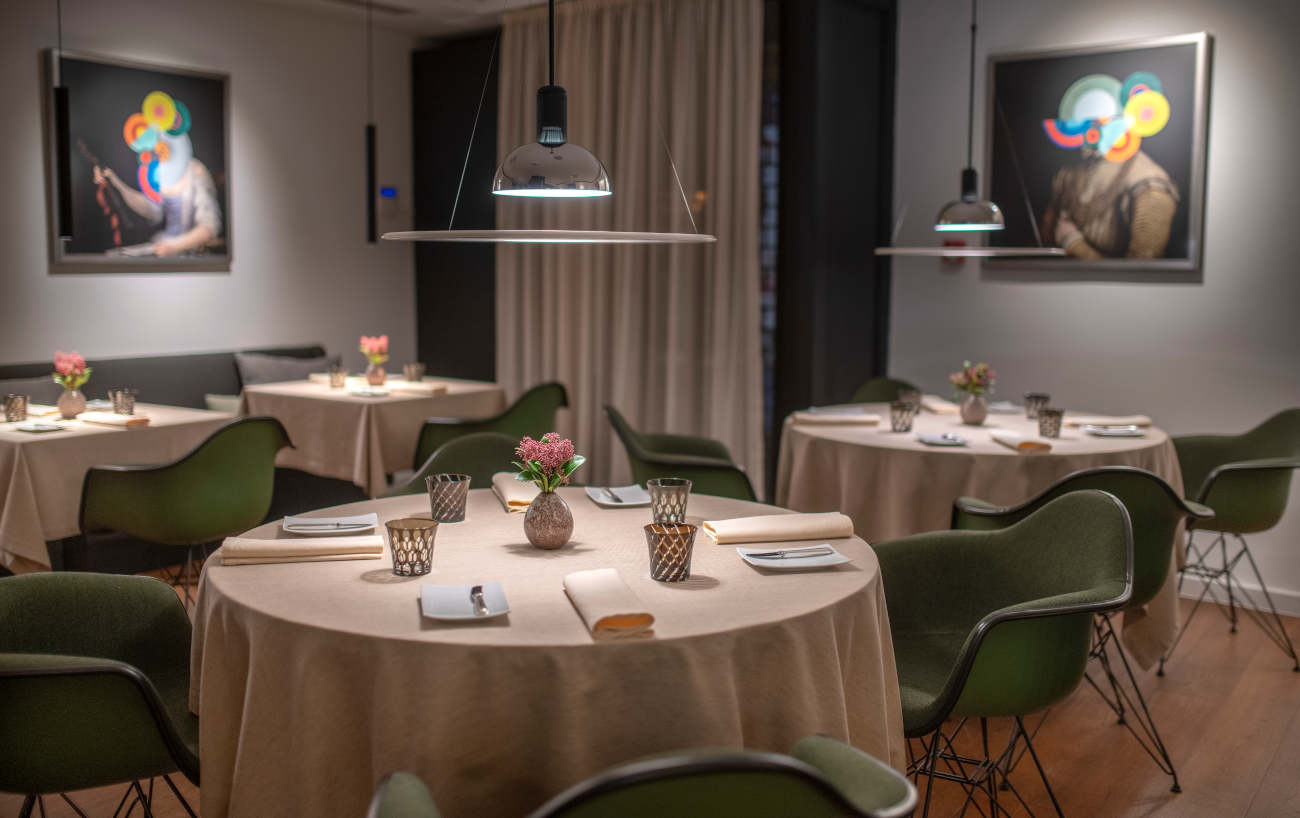
It might be because Hegyi and Portinari are confident entrepreneurs who believe first and foremost in kindness - a rare thing in the food industry. As Chef János puts it, Nicola Portinari showed him how to direct a kitchen with patience and goodness, without shouting or terrorizing his brigade (an even rarer quality in the food industry). « Kindness translates onto the plate », adds Chef János. « Nicola taught me how to respect others and myself. And, obviously, the food. Before meeting him, I was constantly stressed out in the kitchen. »
But it could also very well be that János Erdei is, without a doubt, one of the most interesting
chefs of the moment in Budapest. Though he was trained by Portinari (he calls the Italian chef his « mentor »), one can feel that the 43 year-old Hungarian was given a lot of space to create his own dishes, using family or traditional recipes as a base for his refined, flavorful and unpretentious cuisine. « It’s modern Hungarian cuisine with an Italian influence », he notes soberly. « My wife always knew that I was more than just a regular cook », he then adds with a laugh, « as a young man, honestly, I would have never dreamed of becoming the chef of a place like this ».
Before returning to Hungary, János Erdei worked in Austria, where he got his love of the mountain food (cheese, Schnitzel, spätzle), in Spain, where he learned how to cook with a fiery passion, and in Ireland, where the international team inspired him greatly. « Everyone, even the dishwasher, would take turns to cook for the team. That’s how I discovered Irish stews, Bengali curries… » Thanks to this extensive experience abroad, Chef János isn’t afraid of using any ingredient. When asked what his own favorite dish is, Chef János answers with the wide smile of a little boy: paprikás krumpli, a rustic potato stew with paprika. After an impeccable duck liver foie gras terrine (melting-in-the-mouth, yet firm and spicy, Hungarian style, with a homemade braided brioche) you can try his own version of paprikás krumpli. It features perfectly round gnocchis soaked in a bright red paprika broth. Simple, but to die for, just like the amuse-bouches - a beetroot bonbon, a bergamot-infused carrot, an airy tomato emulsion, a celery biscuit with Italian walnut liquor. Each course can be paired with a Hungarian wine, following the recommendations of Ádám Nyikos, who works as the sommelier of the house. Though not formally trained, the young man is a real gold digger, capable of unearthing the funkiest, most exciting local natural wines, like Maurer’s rich and spicy kadarka (a typical dark red wine from the Eastern Balkans).
Here, you won’t find the grand 12-course menus meant to impress. Pasztell has only three 5- course menus, including a vegan one - Erdei loves to invent new dishes with vegetables. It is a difficult exercise to leave a mark with less dishes, but Chef János does so brilliantly. Whether you get the rabbit stew, or the cod fish with galanga, all are deceivingly simple dishes executed with passion and sophistication. Ending on a surprising note - a dish of sweet pasta, a Hungarian specialty, here a few exquisite raviolis filled with apple jam - a dinner at Pasztell is the ideal closure for a beautiful gourmet day in Budapest.
Hero Image : Hoppà! Bistro







